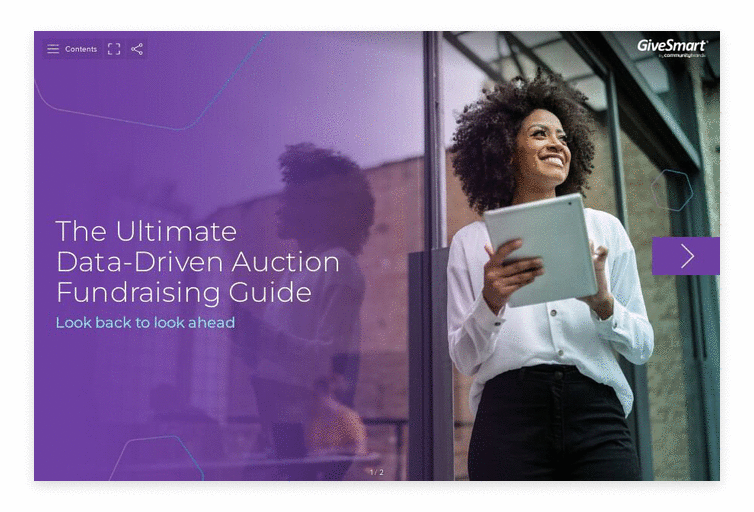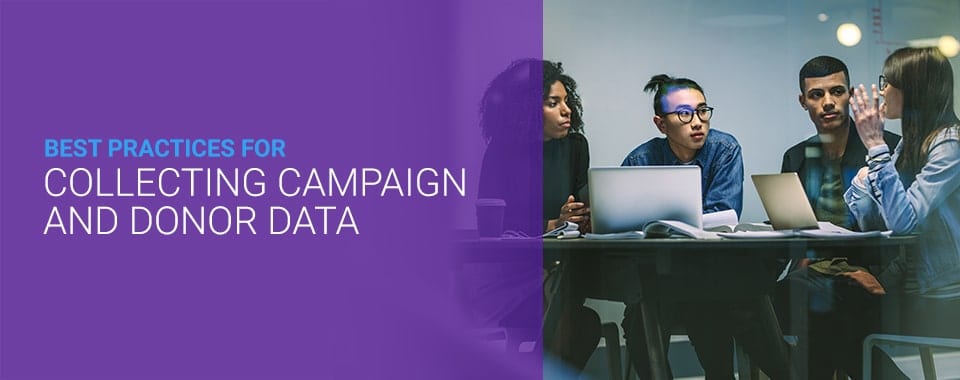Mar 17, 2025
5 Ways to Use Silent Auction Data for Successful Fundraising

About one in four donors give to a nonprofit via an auction. If you’re running your charity auctions online, you’ll have lots of data to better understand what happened at your silent auction.
But what does it all mean, and how can you apply what you have learned to achieve even greater fundraising results with your auction next time?
Evaluating your silent auction data in-depth can further grow giving and even capture new donor giving. Here are five ways to utilize your silent auction data to improve your fundraising strategy.
1. Look at the Auction Packages with the Top Bids
What auction items got the most bids? Those bidding patterns offer insight into where you raise a starting bid to generate more revenue. It also provides insight into what auction items you should preview with next year’s guests to generate excitement.
If you can get similar items next year, see if you can offer any as a double-down, offering the same item to a second or third person at the price the losing bidders were willing to pay.
2. Look at Auction Packages with the Fewest Bids
While the most bid-on items tell you a lot — and can benefit your donor stewardship — packages with the fewest bids also offer great insight to your event team and committee.
Consider what patterns you can find with items with the fewest bids. Was the price point too high? Are they part of a niche category? Was it a lot of work to get those items?
By strategically using your bid history reports, you can see how few bids an item received and filter out items that only had a few bids to curate a higher-quality auction. It will also guarantee a greater return on investment (ROI) for your auction.
3. Run a Report on the Losers
Look at the bids report to see who was interested in items but did not win. Don’t forget to look at what they were willing to spend. Especially if the same person lost several items, they may have walked out of your event with money they wanted to give.
Looking at the losers gives insight into their giving capacity and where you could offer additional giving opportunities at your event. Your major giving team can leverage this data in sponsorship, major giving, and legacy planning conversations.
GiveSmart Events Salesforce Connector
Are donor retention and strategic stewardship a priority at your nonprofit? Access up-to-date donor transaction data instantly with GiveSmart Event’s Salesforce Connector. You’ll also save time and reduce errors, which go hand in hand with manual data entry.
4. Evaluate Your Auction Opening and Closing Times
Nonprofit staff and committees have opinions on how long to keep an auction open and when to close it. Looking at past auction performance can help drive data-driven decision-making for these critical decisions.
A longer opening time might be a smart choice if you only host a virtual auction without any in-person elements. If you have a program with a robust live auction and paddle raise, consider closing your auction ahead of those moments, so donors know how much they have already given in the evening. If you have a speaker and impactful mission moments, you don’t want your auction to close during those moments so that guests and donors are only focused on your speakers.
Also, consider your auction checkout process. Staff and volunteers can take time to move items and organize. People are sometimes eager to pick up their items and leave immediately after the auction closes. Evaluating your whole event and refining your run of show can help generate more revenue overall for your event.
5. Compare Average Winning Bids to Prior Year’s Average Winning Bids
More is not always best. As you look at the number of packages and the average sales price during event-post-mortem, compare it to prior years.
Auctions take a considerable amount of work. Suppose 50 auction packages yielded you marginally less than 75 auction packages. In that case, other turn-key wrap-around fundraisers or revenue enhancers may take less time and could generate more event revenue overall.
Tip
Leveraging silent auction data is key to elevating your overall fundraising event strategy.
By analyzing the items that garnered high and low bids, you can refine your offerings, adjust pricing, and even uncover hidden donor potential through those who came close but didn’t win. Additionally, fine-tuning your event’s timing—from auction openings to closings—ensures that every moment is optimized for donor engagement and revenue generation.
Benchmarking your current auction performance against past results provides a clear roadmap for continuous improvement. Embracing these data-driven insights sharpens your auction and lays a solid foundation for sustained fundraising event success.

Are you looking for more guidance on leveraging auction data?
Check out GiveSmart’s Ultimate Data-Driven Auction Fundraising Guide to learn what you can do with your auction data instead of guessing.
Related



